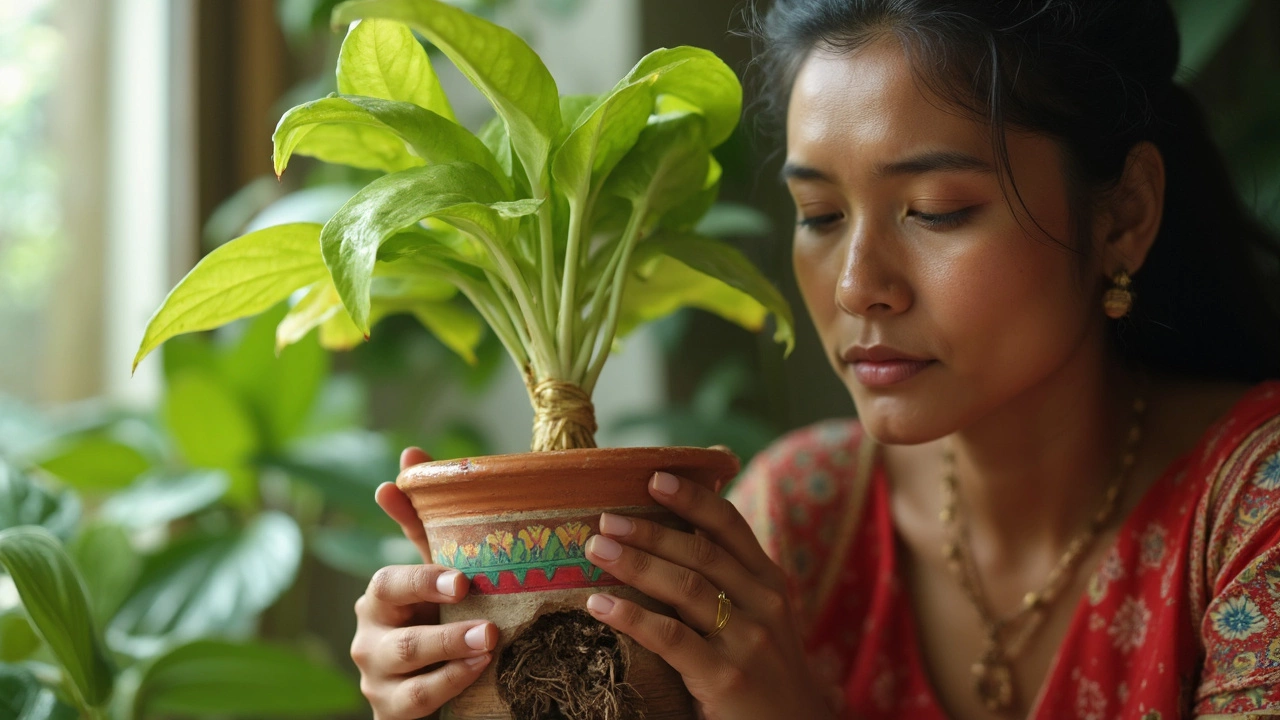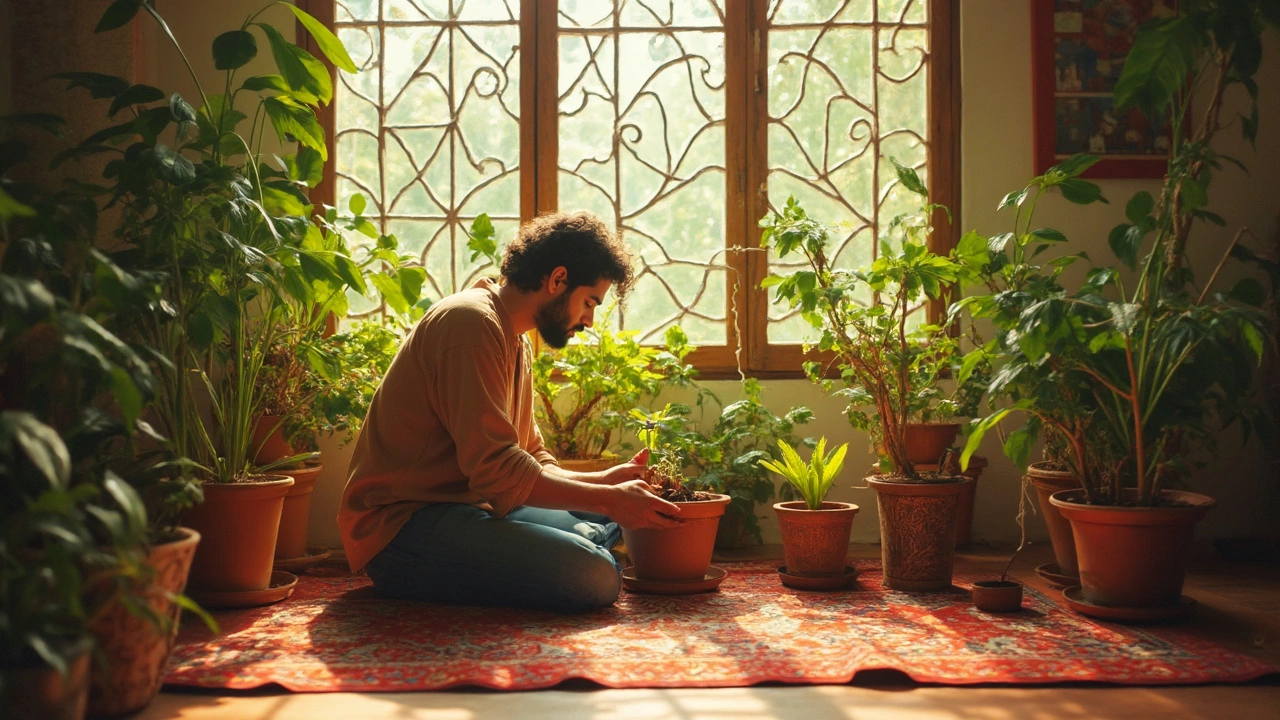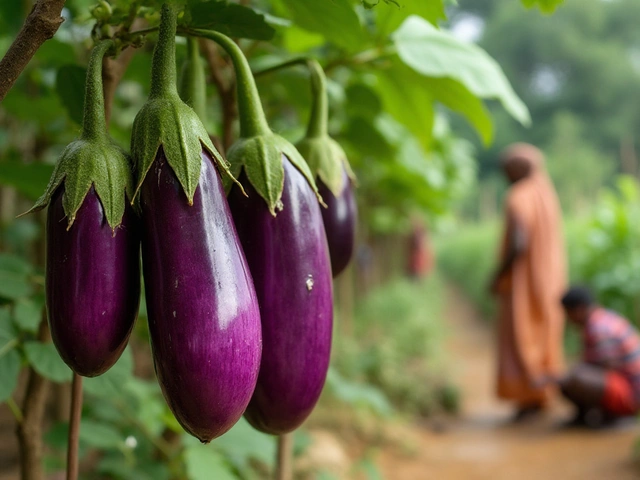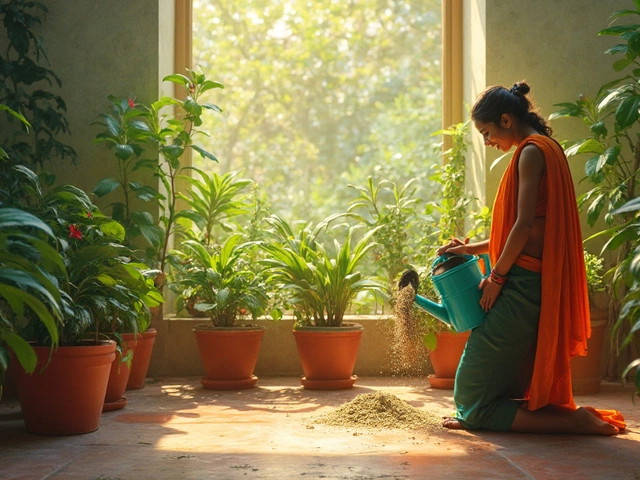Root Rot: How to Spot, Prevent, and Fix It
If you’ve ever pulled a plant out of a pot and found mushy, black roots, you’ve seen root rot. It’s one of the most common reasons plants die, but the good news is you can catch it early and stop it from spreading.
Why Root Rot Happens
Root rot is basically a fungal infection that loves soggy, poorly drained soil. When the roots stay wet for too long, they can’t take in oxygen, and the fungi move in. Over‑watering, compacted soil, and pots without drainage holes are the usual suspects. Even indoor plants can get it if you leave water sitting in the saucer.
Temperature matters too. Warm, humid conditions speed up fungal growth, so a plant in a steamy kitchen is more at risk than one on a breezy balcony. The type of soil matters – heavy clay holds water longer than a loamy mix, making it a perfect breeding ground for rot.
Simple Ways to Stop It
First thing: check the soil moisture before you water. Stick your finger an inch deep; if it feels dry, water, otherwise wait. Using a moisture meter can be even more accurate.
Make sure every pot has a drainage hole. If you’re using a decorative pot without holes, place a plastic liner with holes inside, or switch to a pot that drains.
Improve soil structure by mixing in perlite, sand, or coconut coir. These make the mix lighter and let excess water flow away. For garden beds, add organic matter like compost to prevent soil from becoming compacted.
If you catch root rot early, trim away the brown, mushy roots with clean scissors. Cut back to healthy white tissue. Then, repot the plant in fresh, well‑draining soil and give it a light watering. Let the soil dry a little before the next watering.
For stubborn cases, a fungicide labeled for root rot can help, but many gardeners prefer natural solutions. A dip in a dilute copper sulfate solution or a soak in a mix of water and neem oil can suppress the fungi without harsh chemicals.
Keep the plant’s environment balanced. Provide good air circulation, avoid placing pots on cold floors, and don’t let water sit in saucers. Raising pots on pot feet or bricks can help excess water drain away.
Lastly, consider beneficial microbes. Products that contain mycorrhizal fungi or beneficial bacteria can outcompete the rot‑causing fungi and boost plant health.
Root rot isn’t a death sentence if you act fast. By checking moisture, ensuring proper drainage, and giving plants the right soil, you can keep your garden thriving and avoid the dreaded black, soggy roots.

Does Hydrogen Peroxide Help Root Rot? The Real Story for Indoor Plants
Root rot is a headache for anyone who loves indoor plants. Hydrogen peroxide is often recommended as a quick fix, but does it really work? This article covers how hydrogen peroxide affects root rot, the science behind it, and how to use it safely. You'll get clear tips on spotting root rot early and avoiding it in the first place. If you're looking for simple, effective advice, you're in the right place.

Root Rot Signs: Spotting Trouble in Your Indoor Plants
Root rot can silently attack your beloved indoor plants, often going unnoticed until it's too late. Identifying early signs like yellowing leaves and wilting stems can save your green companions. This article dives into the telltale symptoms, from soggy soil to discolored roots, and provides actionable tips for preventing and treating this common plant ailment. Learn to become a vigilant plant parent and protect your greenery from root rot.
About
Indoor Plant Care
Latest Posts


Why Do We Call the Eggplant the Queen of Vegetables in India?
By Alden Thorne Dec 21, 2024

Adding the Right Ingredients to Water for Thriving Indoor Plants
By Alden Thorne Mar 5, 2025

How Many Rice Grains from One Plant: Surprising Yield Facts You Need to Know
By Alden Thorne Jul 25, 2025
